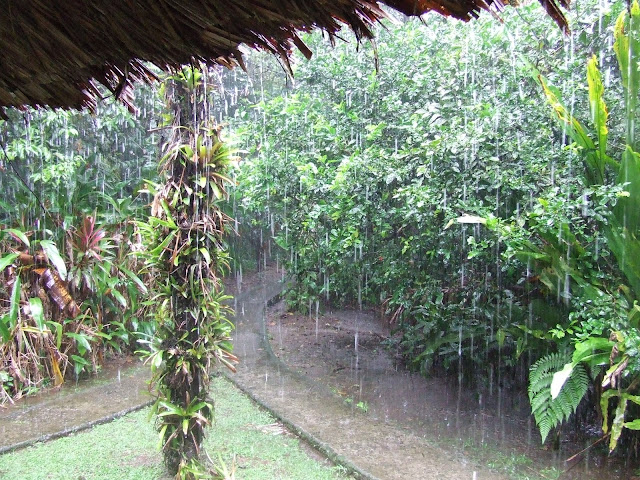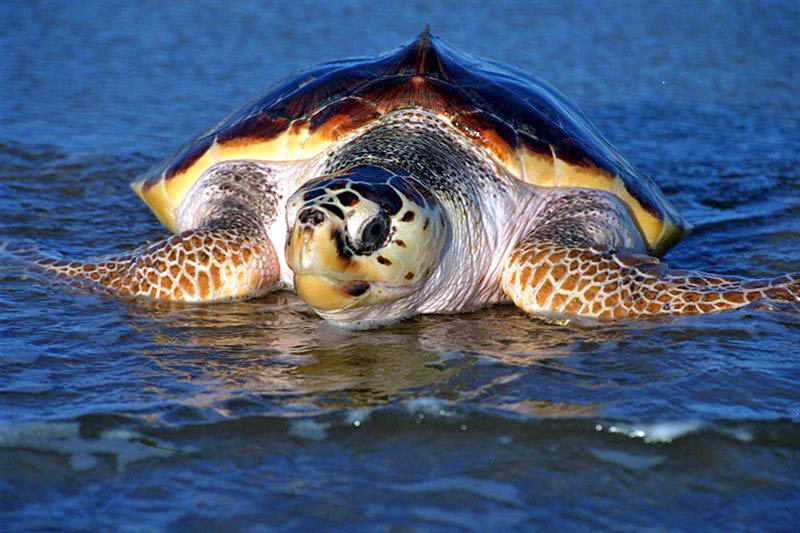Miles walked to date: 355.5
Warning: you might not want to read this if you're squeamish
Last night our patrol was walking on the beach when we saw the shape of a turtle in the distance, emerging from the sea. The three of us waited for her to move up the beach, but after about a minute it became apparent that something was wrong. Her fins were positioned at awkward angles - instead of sticking out from her body, they were tied to each other underneath her body. Her neck looked larger than normal - and her eyes were bulging out of her head. As soon as I realized that this turtle was dead - my heart sank.
Here are some pictures that will be used in a report to MINAE (Costa Rica's Ministry of the Environment).
We don't know exactly what happened to this turtle, but her carapace looked like it had been punctured by a harpoon several times, so she may have been poached offshore. Her body washed onto the beach sometime during the day yesterday (the family I talked to from the house on the beach said they found her at 5:00pm). While examining the turtle all I could think about was an excerpt I read from a masters thesis conducted on this very beach - an interview with a poacher:
"I catch turtle but I don’t like it. It’s ugly…catching turtle is the ugliest thing there is.
Because we put the turtles on their back and we put another one on top…in pairs…and
we peg them together through the flippers. It hurts them a lot and they try to bite.
Sometimes, when the sea is rough, the turtles bounce and the one that lies on her back breaks her shell, because they are so heavy and their shell isn’t that strong. It’s something…it’s very ugly. Sometimes when the coastguard comes close…we throw them into the water… and these turtles, of course they die because they don’t have their fins to swim. But we don’t have time to cut them loose"
-Frederik J.W. van Oudenhoven (Of Turtles and Tactics, Conservation and sustainable community development in San Francisco, Costa Rica, 2007)
Again, we don't know if this is what happened to our turtle but last night reminded me of this interview. The turtle has been reported to MINAE, though they are not coming to examine it. From what I've been told, the ministry told the family on the beach 'leave it for the vultures.' Sometimes I feel like there is such low concern for Playa Norte from the government. This is why I'm so interested in community based conservation practices, strategies that don't require heavy top-down enforcement. One project I've been working on in the local community is the creation of anti-poaching posters. Some people in the village will buy meat or eggs but do not see the turtles butchered on the beach. When people are removed from the process, it makes it hard to believe that it is happening not too far from them. Since most of the people are employed by the tourism industry, their livelihoods depend on nesting turtles that draw in tourists by the thousands. Here's just one of the posters I made using the pictures from last year:

"Hunters are killing our future.
Do not give support for hunters.
Report with this number"
When I first came to Cano Palma, I was frustrated and even a bit angry when I saw poached nests and pictures of butchered turtles. But for the past two months, I've become less judgmental and more aware of the situations that drive poachers to kill turtles. For one, the consumption of sea turtle meat and eggs has been an important food source for people for thousands of years - only in the past few decades has it been made illegal due to species endangerment. The second issue I have become made more aware of is the disparity in the ecotourism industry, which states that an animal is worth more alive than dead. However, what is often overlooked is who is benefiting from the ecotourism industry. Most of the money from tourism does not go directly to Costa Rican people, since most hotels have foreign owners (Frederik J.W. van Oudenhoven, 2007). It is no wonder that so many people are compelled to poach when the opportunity to make extra money walks right into their front yard.
“I know it’s illegal, and I know we’re killing them to extinction,
but I can’t read or write […] and I don’t have a fixed job...”.
-Interview with a fisherman, Frederik J.W. van Oudenhoven, 2007
If anything, this has motivated me more to be involved in conservation and sustainable development. There are so many issues surrounding turtle poaching in this area that it's very difficult to address all the root causes. From what I've read - people poach for many different reasons: either for their own sustenance, to sell to others, for money to fuel addictions or for organized criminal operations. How it is possible to create a conservation strategy that covers all of that? It's certainly not an easy task, and I feel more compelled than ever to take on the challenge.
-Thanks to Kirstin Silvera for the turtle pictures, since I wasn't able to take any last night-
__________________________________________________________________________________
UPDATE: July 7, 2012.
Last night another deceased turtle was found on the beach, tied the same way as the first one. The rumor from local community members is that a boat was intercepted by the coastguard, and in the process dumped its cargo of drugs and poached turtles before they could be charged with possession.













